 Johann Flückinger was a highly experienced army surgeon, with several medics under his command. Calm, reasonable Austrian men, they could be trusted upon to entertain no superstitious nonsense from the Slavic peasantry.
Johann Flückinger was a highly experienced army surgeon, with several medics under his command. Calm, reasonable Austrian men, they could be trusted upon to entertain no superstitious nonsense from the Slavic peasantry.
Fearing some kind of uprising, if nothing was done, the local commandant had sent in a request for assistance.
Flückinger and two of his members of staff were the response. They naturally dismissed all talk of vampires, but scratched their heads over Glaser's notes. Accompanied by two military officers, they went to see for themselves.
The trio arrived in Medveđa on January 7th 1732. They discovered that the deaths had not yet abated. A sixty year old man named Stanjiko had died since Glaser had left. He was followed into his grave by 25 year old Miloje. Another woman had perished, taking her eight week old baby with her. But their names weren't recorded.
Most recently, a young woman had died. Her name was Stanojka. She'd woken in the night, just 15 days before her death, screaming about a vampire in her room. Her father-in-law recounted how the family had rushed to her side, but there was nothing to be seen.
She had told them that the vampire looked like Miloje - the adult, not the boy, who had been buried just days prior to the attack. Within three days, the previously healthy Stanojka was dead too.
With no-one presently ailing, Flückinger ordered that the previous victims' bodies all be exhumed, so that he could perform a post-mortem. Five of the corpses were shown to be decayed, exactly as he expected. But twelve were not.
He took very detailed notes. They include such details as Milica - the first victim - appearing quite plump, though in life she had been 'lean and dried up'. Her skin now held a vividly red hue, nor was she alone in that.
For many of the bodies, Flückinger recorded that 'the skin on ... hands and feet, along with the old nails, fell away on their own, but on the other hand completely new nails were evident, along with a fresh and vivid skin'. More disturbingly, he kept finding blood in their major organs. Not coagulated, as he had anticipated, but apparently fresh and fluid.
This officious, rational Austrian reached his conclusion. The corpses all showed signs of vampirism. It was real.
He took advice from the local elders, including a consultant with a gypsy tribe who were camped nearby. A posse of men from both the village and the gypsy camp took control of the situation. They decapitated the bodies and then engulfed them in a massive funeral pyre.
No-one else died.



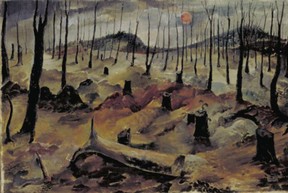 Serbia, in the early 1700s, was not a safe place to live. It was right on the front line of the endless clashes between Christendom and the Islamic forces of the Ottoman Turks. Thousands were dispossessed, starved or buried their dead with injuries sustained in the crossfire.
Serbia, in the early 1700s, was not a safe place to live. It was right on the front line of the endless clashes between Christendom and the Islamic forces of the Ottoman Turks. Thousands were dispossessed, starved or buried their dead with injuries sustained in the crossfire. With his military experience, Arnold Paole became a hajduk in his native village.
With his military experience, Arnold Paole became a hajduk in his native village. 


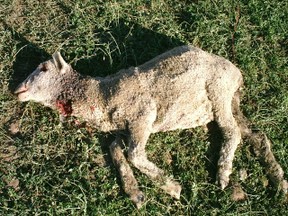 Arnold Paole's neck was broken in a fall from the top of a haywagon. He was buried with all due Christian ceremony in the local churchyard.
Arnold Paole's neck was broken in a fall from the top of a haywagon. He was buried with all due Christian ceremony in the local churchyard. 

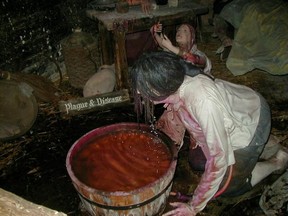 In November 1731, a fifty year old woman from Medveđa sickened and died. Her name was Milica and it took her three months to perish. It would be later determined that she was the first of a new infestation of vampires in the village.
In November 1731, a fifty year old woman from Medveđa sickened and died. Her name was Milica and it took her three months to perish. It would be later determined that she was the first of a new infestation of vampires in the village.


 Johann Flückinger was a highly experienced army surgeon, with several medics under his command. Calm, reasonable Austrian men, they could be trusted upon to entertain no superstitious nonsense from the Slavic peasantry.
Johann Flückinger was a highly experienced army surgeon, with several medics under his command. Calm, reasonable Austrian men, they could be trusted upon to entertain no superstitious nonsense from the Slavic peasantry.


 Glaser wasn't stupid. He knew that the second investigation had meant that his words hadn't been believed.
Glaser wasn't stupid. He knew that the second investigation had meant that his words hadn't been believed. 
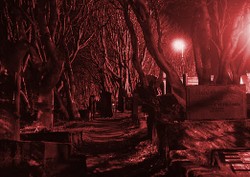

 St Tydecho's Churches in West Waleson 09/03/2014
St Tydecho's Churches in West Waleson 09/03/2014
 Goodies for an Outlander Premiere Partyon 03/06/2015
Goodies for an Outlander Premiere Partyon 03/06/2015
 Holocaust Memorial Day Interview with Rainer Höss, Grandson of Rudolf Architect of Auschwitzon 01/24/2015
Holocaust Memorial Day Interview with Rainer Höss, Grandson of Rudolf Architect of Auschwitzon 01/24/2015
 Romantic Valentine Gifts for an Outlander Fanon 01/16/2015
Romantic Valentine Gifts for an Outlander Fanon 01/16/2015

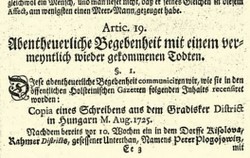
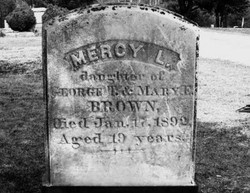
Comments
Oh! I'm looking forward to it now! Hopefully you will find some 48 hour days lying around. :/
Thank you very much.
Definitely I could write an article on that subject. If only I find time. :) I had few more articles in plan too. Oh, if only day lasts for 48 hrs, at least. ;)
You know I love to cooperate with you on articles. I will write one soon, and you will be the first one to know. ;)
Once more, great story!
When it comes to vampires, I think it's less a conspiracy to say that it's tuberculosis, plague or fever, than an actual blood-sucker. Though we never know! Is there an article here for you? Going through the various illnesses and diseases, which may have been at the root of 'vampire epidemics' in history?
I know I'd love to read it.
Well, I love mysteries, and I believe that there could be something more, something that is a bit harder to explain. But it is always good to stay a bit distanced, because I have powerful imagination. I am afraid of getting pulled into some conspiracy theory. I do that a lot if I don't try to reach logic first. :)
Hi Mladen, I was so hoping that we'd hear from you on this one! I'm pleased that I got you interested in part of your history. Job done!
I'd heard of porphyria associated with vampirism, but not Hantaan fever. Thank you for pin-pointing a probable cause here. For us less medically trained people, it's hard to know what was going on.
Interesting story, Jo, really. I have heard about it before, but never felt interested with it, until now. Even though I am Serb, I know little about it. I knew vampire is the only word from Serbian that was adopted in English. :)
This could be Hantaan fever. There were few epidemics in Serbia and Balkans earlier. Shows similar symptoms and it is form of a hemorrhagic fever. I couldn't tell for real.
But I know people used (and still do) to kill others and drink their blood. It is believed that human blood can help those with porphyria (rare sickness). But it is only a belief that actually caused some vampire-like events.
Yours,
M.
That's good, because it's vampires. This subject cries out for wild imaginings!
Yes letting my imagination run away a bit...
Arnold Paole does, or those who came later? Though it is an interesting mental image to have a mad scientist there!
This is an interesting story feels a bit like a copy cat vampire wanna be in my humble opinion. Who's to say what mad scientist did this and what chemical tools may have been utilized to mock up such events. :)K